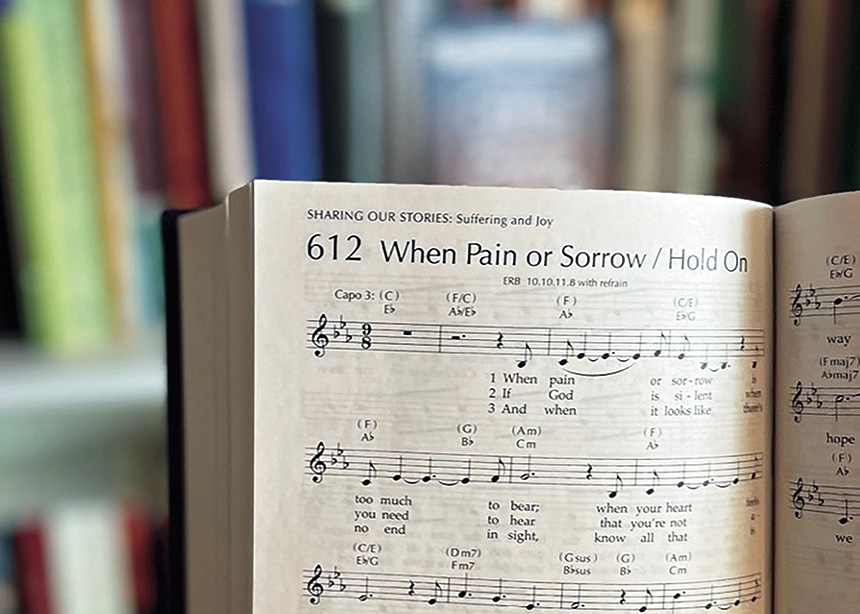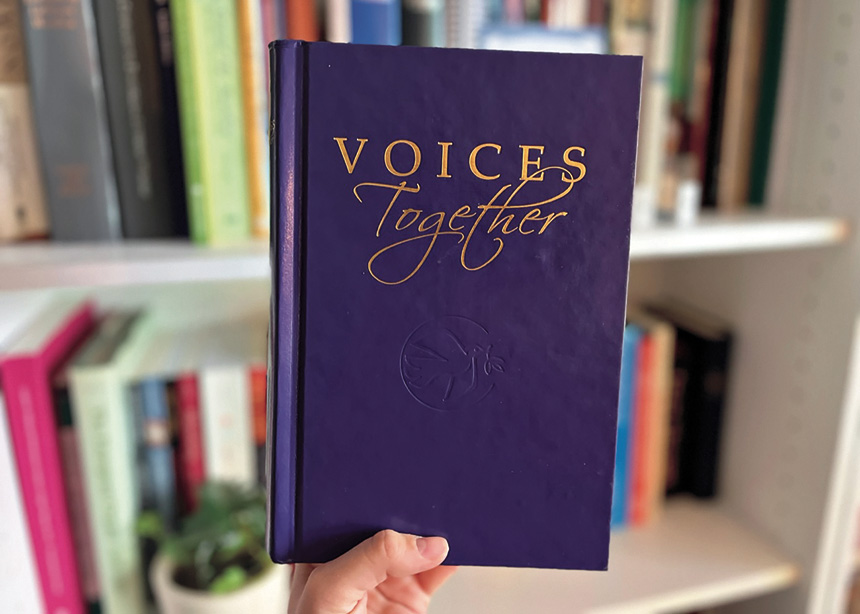It’s no secret that there are gaps in our congregational song. In particular, gaps in the kinds of words we have available for moments of crisis, despair and loss. Voices Together sought to speak into this opening, and features many resources that offer new words for these moments.
Examples include a prayer for mental health, “Hear our prayer, O God of healing and hope” (VT No. 978); a contemporary worship song on crying out to God in our grief, “When I Can’t Find My Way” (VT No. 591); and a response to a community crisis, “In our doubt and fear” (VT No. 1044).
In particular, “When Pain or Sorrow/Hold On” (VT No. 612) has gained significant traction for the way it addresses these themes. Its songwriter, Adam Tice, has noted that there are many songs that invite individuals to commit to a community of faith, but there are few that invite a community to name its commitment to an individual, particularly in times of hardship. This may be a shortfall unique to Christian congregational song, as Tice names several secular songs that fulfil this function, including “You Will be Found” from the popular musical Dear Evan Hanson.
“When Pain or Sorrow” is a much-needed contribution to our repertoire, inviting communities to uphold those who are in pain. The chorus sings: “Hold on, hold on, to find a way to get through. And when your hope is gone and you can’t hold on, then we will hold on to you.”
In addition to being the text editor for Voices Together, Tice is one of the most well known hymn writers today, well beyond Mennonite circles. His texts are featured in more than a dozen hymnals, and he works as the editor for congregational song for GIA Publications. “When Pain or Sorrow” is a unique contribution from Tice, as the song came to him in a dream.
“Mike Erb, a fellow member of the Voices Together hymnal committee, lost his brother Rudy to suicide in early 2017,” Tice says in an excerpt from his text collection Pulse and Breath. “Early one Sunday morning I had a dream that the committee was meeting together, and that Mike wanted to share a song with us. When I woke up I wrote out as much of it as I could remember and then worked towards crafting the rest. . . . Once I had a full score in hand, I sent it to Mike, without telling him that I had written it or how it had come to me. He immediately responded that it captured what he had been going through since Rudy’s death.”
Tice suggests that communities learn “When Pain or Sorrow” before a situation comes up that calls for the song: “It seems strange to say, but we need to practise for tragedy.” On performance practice, he offers: “I’d suggest having a soloist sing the first verse and refrain, and then inviting the congregation join on the second verse.”
The version found in Voices Together is written in unison, but there is a choral arrangement available online through GIA Publications, as well as a backing piano track. A piano accompaniment can be found in the Voices Together accompaniment edition.
“When Pain or Sorrow” offers a text that many have been longing to sing in church, but haven’t known how to. It sings of doubt, silence, numbness and absence, while summoning openness and honesty, and inviting unending support. When congregants and communities face tragedy and heartbreak, this song offers poignant and healing words.
Link to video of When Pain or Sorrow (accompanied by VT music editor Benjamin Bergey): “When Pain or Sorrow.”
Anneli Loepp Thiessen is a PhD candidate at the University of Ottawa and co-director of the Anabaptist Worship Network.
—Corrected March 10, 2023. This article originally misspelled the song title, “You Will be Found.”









Leave a Reply
You must be logged in to post a comment.